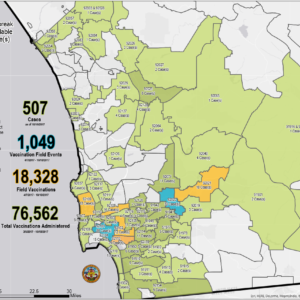The Stream, October 23: Water Pollution Caused 1.8 Million Deaths in 2015, Study Finds
The Global Rundown
Nearly 9 million deaths were caused by pollution in 2015, a global study finds. Festival-goers in India pollute air and clog rivers while celebrating Diwali. A North Dakota senator calls on USDA workers to help respond to the state’s ongoing drought. Forecasted rain is expected to ease drought conditions in Hawaii but may also prompt localized flash floods. Researchers find that cool roofs, which help keep temperatures low in buildings and cities, could also reduce the amount of water needed for urban irrigation.
“Pollution is much more than an environmental challenge – it is a profound and pervasive threat that affects many aspects of human health and wellbeing.” –Philip Landrigan, a researcher who took part in a recently published international study which attributed nine millions deaths in 2015 to pollution, mainly through diseases such as lung cancer, heart conditions, and strokes. Dirty air was the most fatal form of pollution, causing 6.5 million deaths, while contaminated water accounted for an estimated 1.8 million deaths. Reuters
By The Numbers
18 Times the healthy limit of air pollution in Delhi, India following an evening of firecrackers set off in celebration of the Hindu festival Diwali. The Indian Supreme Court declared the firecrackers illegal after last year’s celebration, when firework residue mixed with crop burnings from other states. The Guardian
15 percent Proportion of average rainfall that some areas in Hawaii have received since September 1. Many areas of the state are experiencing abnormally dry conditions. Upcoming rains on Monday and Tuesday are forecasted to ease drought, but may also cause localized flash floods. AccuWeather
Science, Studies, And Reports
A team of researchers at the Lawrence Berkeley National Laboratory discovered that “cool roofs” could lower outdoor water use in urban areas. The study, which involved regional climate simulations of 18 California counties, concluded that cool roofs reduce ambient air temperatures by 1 to 1.5 degrees Celsius, lowering the water needs of lawns and other urban landscaping. Science Daily
On The Radar
North Dakota Senator Heidi Heitkamp urged the U.S. Department of Agriculture (USDA) to send additional workers to help respond to the effects of the state’s drought. Numerous North Dakota counties were declared natural disasters after months of severe drought, but state officials are struggling to process the necessary applications for aid and emergency loans. Agweb
Kayla Ritter is a recent graduate of Michigan State University, where she studied International Relations and Teaching English to Speakers of Other Languages. She is currently based in Manton, Michigan. Kayla enjoys running, writing, and traveling. Contact Kayla Ritter





